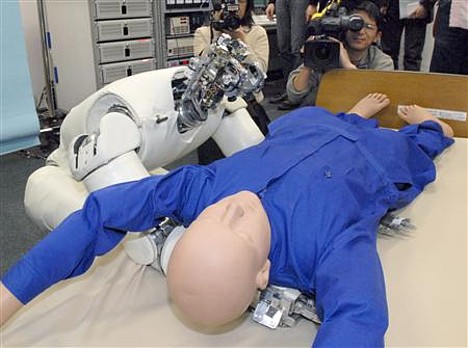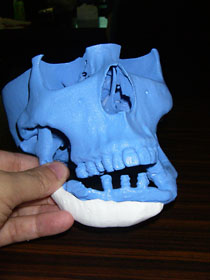 Researchers from the Tissue Engineering Department at the University of Tokyo Hospital and venture company Next 21 are using 3D inkjet printers to produce tailor-made artificial bones for use in facial reconstructive surgery. Following initial trials performed on a Welsh corgi and 10 people over the past year and a half, the researchers are set to begin a more extensive second round of human testing this autumn.
Researchers from the Tissue Engineering Department at the University of Tokyo Hospital and venture company Next 21 are using 3D inkjet printers to produce tailor-made artificial bones for use in facial reconstructive surgery. Following initial trials performed on a Welsh corgi and 10 people over the past year and a half, the researchers are set to begin a more extensive second round of human testing this autumn.
To make an artificial bone with this technology, a 3D computer model of the bone is first created based on the patient's X-ray and CT scan data. The computer model is then sliced into a large number of cross-sections and the data is sent to a special 3D inkjet printer, which works sort of like an ordinary inkjet printer by transferring tiny droplets of liquid onto a surface. However, unlike ordinary printers that print on paper, this one prints onto thin layers of powdered alpha-tricalcium phosphate (alpha-TCP). The "ink" is a water-based polymer adhesive that hardens the alpha-TCP it comes into contact with. By repeatedly laying down the powder and printing successive layers on top of one another, the printer is able to physically reproduce the desired bone to an accuracy of one millimeter.
Strong, lightweight and porous, the printed bones have characteristics similar to natural bone, and because they are tailored to fit exactly where they need to go, they are quick to integrate with the surrounding bone. The printed bone is also designed to be resorbed by the body as the surrounding bone slowly grows into it and replaces it.
In initial human trials conducted between March 2006 and July 2007, the effectiveness and safety of the artificial bones were tested in plastic surgery operations performed on 10 male and female patients between the ages of 18 and 54. In the second round of trials beginning this autumn at 10 medical institutions across Japan, the researchers plan to print up and implant synthetic bones in 70 volunteer patients with face or skull bones that have been damaged or removed due to injury or surgery.
While the printed bones are still not considered strong enough to replace weight-bearing bones, they are ten times stronger than conventional artificial bones made from hydroxylapatite, a naturally occurring mineral that is also the main component of natural bone. The printed bones are also cheaper and easier to make than hydroxylapatite implants, which must be sintered, or heated to a high temperature to get the particles to adhere to each other. In addition to taking longer to produce, sintered implants also take longer for the body to resorb.
The next round of human trials will be conducted at Dokkyo Medical University, Saitama Medical University, Tokyo Dental College, University of Tokyo, Juntendo University, Tsurumi University, Kyoto University, Osaka Medical College, Kobe University and Osaka City General Medical Center.
The researchers hope to make the technology commercially available by 2010.
[Source: Fuji Sankei, The Chemical Daily]
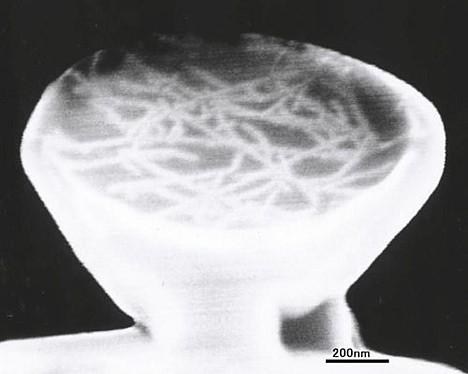

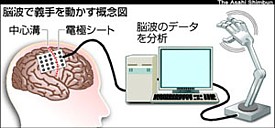 Researchers at Osaka University are stepping up efforts to develop robotic body parts controlled by thought, by placing electrode sheets directly on the surface of the brain. Led by Osaka University Medical School neurosurgery professor Toshiki Yoshimine, the research marks Japan's first foray into invasive (i.e. requiring open-skull surgery) brain-machine interface research on human test subjects. The aim of the research is to develop real-time mind-controlled robotic limbs for the disabled, according to an announcement made at an April 16 symposium in Aichi prefecture.
Researchers at Osaka University are stepping up efforts to develop robotic body parts controlled by thought, by placing electrode sheets directly on the surface of the brain. Led by Osaka University Medical School neurosurgery professor Toshiki Yoshimine, the research marks Japan's first foray into invasive (i.e. requiring open-skull surgery) brain-machine interface research on human test subjects. The aim of the research is to develop real-time mind-controlled robotic limbs for the disabled, according to an announcement made at an April 16 symposium in Aichi prefecture. 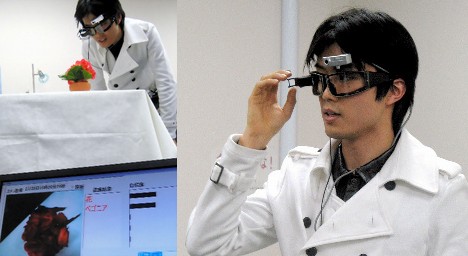
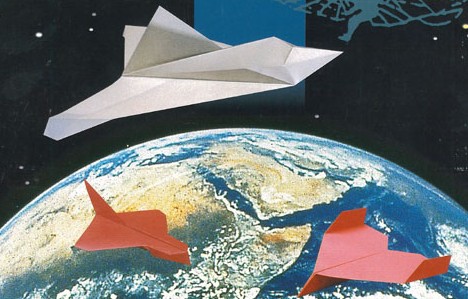
 A team of University of Tokyo researchers led by professors Hitoshi Sakano and Ko Kobayakawa have announced they have genetically engineered a mouse that does not fear cats, simply by controlling its sense of smell. By tweaking genes to disable certain functions of the
A team of University of Tokyo researchers led by professors Hitoshi Sakano and Ko Kobayakawa have announced they have genetically engineered a mouse that does not fear cats, simply by controlling its sense of smell. By tweaking genes to disable certain functions of the  Researchers from the Tissue Engineering Department at the University of Tokyo Hospital and venture company
Researchers from the Tissue Engineering Department at the University of Tokyo Hospital and venture company 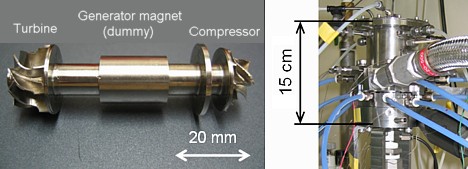
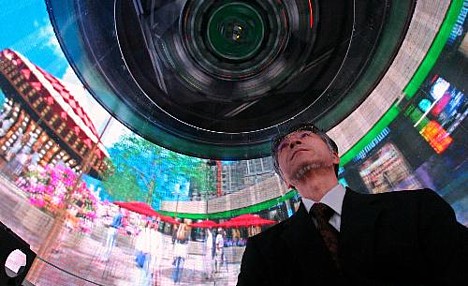
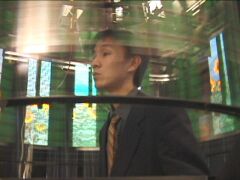 Inside the 1.2 meter (4 ft) tall, 2 meter (6.5 ft) wide cylindrical display are 50,000 LEDs arranged in columns. As the display rotates around the observer's head at a speed of 1.6 revolutions per second, these specially arranged LED columns show a slightly different image to each of the observer's eyes, thus creating the illusion of a 3D image. In other words, TWISTER tricks the eye by exploiting what is known as "binocular parallax" -- the apparent difference in position of an object as seen separately by the left eye and the right eye.
Inside the 1.2 meter (4 ft) tall, 2 meter (6.5 ft) wide cylindrical display are 50,000 LEDs arranged in columns. As the display rotates around the observer's head at a speed of 1.6 revolutions per second, these specially arranged LED columns show a slightly different image to each of the observer's eyes, thus creating the illusion of a 3D image. In other words, TWISTER tricks the eye by exploiting what is known as "binocular parallax" -- the apparent difference in position of an object as seen separately by the left eye and the right eye. 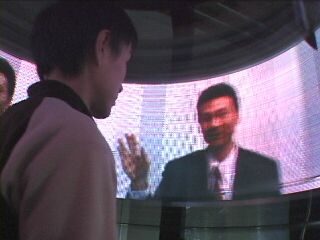 For now, TWISTER is capable of serving up pre-recorded 3D video from a computer, allowing viewers to experience things like virtual amusement park rides or close-up views of molecular models. However, the researchers are working to
For now, TWISTER is capable of serving up pre-recorded 3D video from a computer, allowing viewers to experience things like virtual amusement park rides or close-up views of molecular models. However, the researchers are working to 